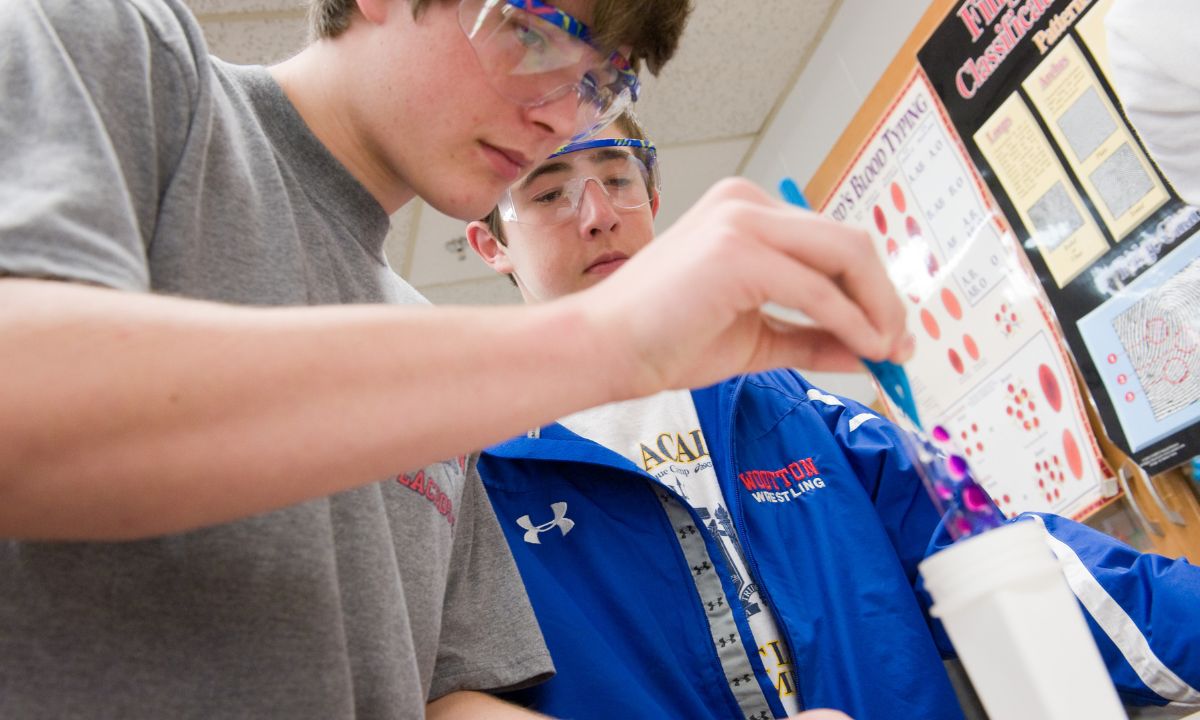STEM’s Grand Challenges — And Opportunities
Weld: With focus shifting to AI, changes in federal data and grant programs, and a lack of public awareness, STEM education must adapt and expand.

Get stories like this delivered straight to your inbox. Sign up for The 74 Newsletter
Never in our history have science and technology figured so prominently in our economic well-being and national security. STEM jobs and products dominate the economy, accounting for 69% of the U.S. gross domestic product. Emerging technologies across energy, information, transportation, healthcare, agriculture, and every other aspect of life are now battlegrounds of capable, competitive nations.
In his recent letter to the Director of the Office of Science and Technology Policy, President Donald Trump charged his Office of Science and Technology Policy to “cement America’s global technological leadership and usher in the Golden Age of American Innovation.”
Tha means the administration will do all it can to bolster the STEM K-12 talent pipeline, right? And Americans will surely support policies aimed at equipping youth for high-demand and mission-critical career paths, eh?
U.S. STEM education faces eight ornery, grand challenges, each conceivably conquerable if we rally.
1. America’s STEM Education imperative is being eclipsed by an AI exigency. The stakes associated with leading in artificial intelligence blow the 1958 Sputnik crisis out of the sky. The Trump administration recently released an AI-in-education executive order. The STEM education community should seize leadership of a chaotic AI-in-education landscape, leveraging vast networks and partnerships as testbeds. STEM gives AI context and purpose. Many leading AI developers and funders are investing strongly in K-12 technology education.
2. Federal education research and development funding has been sharply diminished lately. STEM education leaders are going to miss the data and research that flowed from the Institute of Education Sciences at the U.S. Department of Education through its now-diminished National Center for Education Statistics, including the hobbled National Assessment of Educational Progress and the Integrated Postsecondary Education Data System. But as plans for carving up federal education grant programs into state block grants emerge, state STEM networks will be well-positioned to advance this sort of analysis.
3. Teachers of STEM subjects from pre-K to college level may not be career-ready for the modern teaching job. Systems of teacher preparation and professional development remain largely discipline focused, while the messiness of real-world issues meshes the disciplines. The President’s termination of ED grants for Teacher Quality and Teacher Leadership, as well as Effective Educator Development, exacerbate the challenge of changing how we prepare educators. But state block grants could represent an opportunity for supporting STEM-focused educator development.
4. Well-documented STEM education innovations dot the U.S. education landscape, but progress toward scaling is inequitable and frustratingly incremental. A recent National Academies report examined hurdles, including decentralization and lack of incentives to scaling proven practices in STEM education.Recommendations were familiar: increased federal investments in professional development, more data collection, and broadened connections for partnerships and collaborations. In reality, evidence-based practices identified by research have often been ignored by public school districts and the education schools that prepare teachers. If the estimated $1.5 billion annual federal education R & D investment were carved into 50 chunks for states, STEM leaders could make the case for devoting tens of millions of dollars to bringing innovations to scale.
5. Standards for K-12 science, mathematics, technology, are great for leveling the playing field, but may inhibit STEM innovation. The entire K-12 galaxy spins on a standards axis: curricula, professional development, assessment and grading, publishers, performance reviews. But when organizations and states define what students should know and be able to do at each grade level, rarely do they feature the more integrated aspects of STEM (see challenge #3). Standards-driven systems favor efficiency and conformity (i.e., teach to the standards) over creativity and inventiveness. It’s time to flip the script from emphasizing content (What do you know?) to practices (What can you do?), which are hallmarks of STEM education.
6. Now that the acronym DEI is target practice for many folks in power at the national and state level, that puts at risk the STEM community’s consensus objective to broaden the talent pipeline. The shift is starkly evident at the National Science Foundation, where updated priorities state that “Awards that are not aligned with NSF’s priorities have been terminated, including but not limited to those on diversity, equity, and inclusion (DEI)….” Is there room to continue prioritizing outreach to the underserved and underrepresented? Yes, says NSF “so long as these programs do not preference or limit participation based on these protected characteristics.” STEM for all.
7. The skills and attributes that STEM education aspires to imbue – teamwork, curiosity, ideation, negotiation, accountability and 95 more – are tough to measure. Simulations, portfolios, interviews, and AI chatbot diagnostics are so far questionably valid, reliable, and equitable at distinguishing learners’ acquisition of soft skills, a.k.a. employability skills, 21st century skills, or durable skills. Competency born of practice is the ideal route for STEM education, and now that all 50 states permit competency-based assessment, STEM can lead a culture shift.
8. American STEM education faces a public awareness problem. The 1958 Sputnik scare was Tinker Toys compared to today’s global competition to own quantum, AI, and other emerging technologies. A functionless, beeping satellite spurred a multi-billion-dollar investment in STEM, while today’s government shrinks science budgets and dismisses experts. What’s lacking is a jolt “to snap the U.S. out of its complacency.” But unlike 1958, we have today a vast array of university STEM centers, local and regional STEM ecosystems, STEM specialty schools, and STEM learning centers across the continent. If public awareness of the nation’s STEM imperative were prioritized as a mission action by all, the jolt could spark a STEM rally.
This ornery octet of challenges faced by the STEM education community is surmountable if we work at it. A “golden age of American innovation” sounds great but calls for a strong system of STEM education to fuel the talent pipeline and to wisely manage profound human inventiveness.
Get stories like these delivered straight to your inbox. Sign up for The 74 Newsletter

;)
